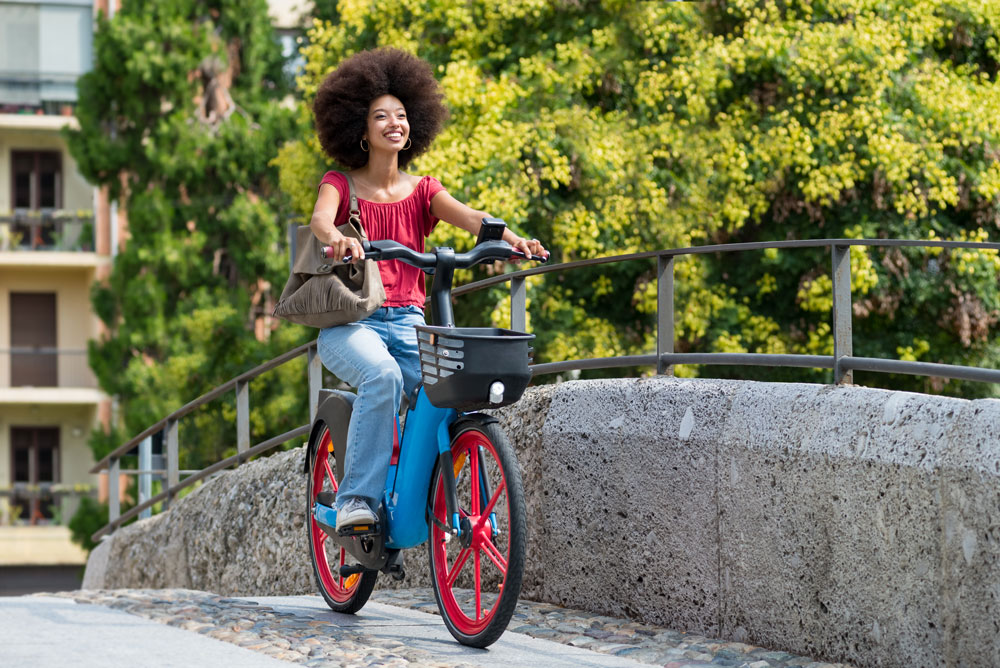The moment of collision, a split second where the world seems to pause, carries a tale of two journeys. The electric bike (e-bike) rider, is enveloped in the promise of speed and efficiency. And the traditional cyclist, propelled by the rhythm of their own heartbeat. Both share the road’s stage. Yet the narratives of their encounters with motor vehicles diverge significantly. Thus painting a complex picture of safety, risk, and aftermath in the urban tapestry.
The Physics of Speed and Impact: E-Bikes on the Frontline
The surge of e-bikes into the urban transportation scene has been nothing short of revolutionary. Marrying the eco-friendly ethos of traditional bikes with the zip of electric propulsion, e-bikes promise a quicker commute through congested city streets. Yet, this speed advantage introduces a complex dynamic regarding safety. The physics of motion dictates that e-bikes carry more momentum due to their higher operating speeds. Consequently, the impact force is significantly magnified when an e-bike rider is involved in a bike-car accident. This stark reality places e-bike riders in a precarious position, facing a greater risk of serious injury in a collision. It’s a reminder that with the adoption of new technology comes the need for heightened awareness and precaution. Especially, on the road where the stakes are inherently high.
A Tale of Injuries: E-Bike Riders in the Spotlight
E-bike riders navigate the urban sprawl with an air of modernity, but this advancement comes with vulnerabilities. Speed’s allure can quickly become a liability in the blink of an eye. The types of injuries reported from e-bike accidents tend to be more severe than those from traditional bike accidents, encompassing a range of serious conditions, from traumatic brain injuries to complex fractures. This severity is largely attributable to the greater velocities involved in e-bike travel, which increase the chance of collision and compound the force when riders hit the ground. The aftermath of such incidents is often a long, arduous path to recovery, dotted with hospital visits, physical therapy, and the emotional toll of coming to terms with the incident. It’s a stark reminder of the risks that come with the benefits of e-bike use, underscoring the importance of rigorous safety measures.
The Traditional Cyclist: A Different Kind of Vulnerability
Riding a conventional bicycle through the city’s veins offers a sense of freedom and simplicity, but it’s not without risks. Traditional cyclists, propelled solely by their own efforts, might not reach the speeds of e-bike riders, but their vulnerability on the road remains significant. The common injuries among traditional cyclists, such as abrasions, contusions, and minor fractures, might seem less severe by comparison, but they still carry the weight of disruption and discomfort. These injuries often result from the unpredictable dance with urban traffic, where a moment’s lapse can lead to an accident. Moreover, the lack of electric assistance means traditional cyclists might be more directly exposed to the risks of close vehicle encounters. It’s a reminder that, regardless of the cycling mode, the road demands respect and caution from all who share it.
Legal Landscapes: Navigating the Aftermath
After the dust settles following a bike-car accident, riders often find themselves at the beginning of a complex legal journey. For e-bike enthusiasts, the stakes are notably high, as the severity of potential injuries can lead to more complicated insurance claims and liability issues. The road to resolution is fraught with legal intricacies, from determining fault to navigating the often-murky waters of insurance policies.
Misconceptions
Misconceptions about rights and protections can further complicate matters, leaving riders overwhelmed and underprepared for the battle. It’s a scenario where legal knowledge becomes as crucial as a helmet during the ride. Understanding the specifics of local laws, insurance coverages, and the rights of cyclists is paramount. This awareness equips e-bike riders to advocate for themselves effectively, ensuring they are not left navigating the aftermath alone.
Legal assistance becomes beneficial and essential in many cases, highlighting the importance of seeking experienced counsel to chart a course through the legal aftermath of a bike-car collision.
Prevention: Charting a Safer Course
Averting accidents before they occur is the most effective way to protect cyclists and drivers. This mission requires a concerted effort from all parties sharing the road. E-bike riders, equipped with the knowledge of their vehicle’s capabilities and potential risks, can take proactive steps to enhance their safety.
e-Bike Safety
High-visibility gear, such as reflective vests and LED lights, make them more noticeable to drivers, especially during the twilight hours. Similarly, understanding the importance of signaling intentions and maintaining a safe distance from vehicles can prevent many accidents. On the other hand, traditional cyclists benefit greatly from defensive riding techniques and reflective attire, which help signal their presence on the road.
Motorist Safety
For motorists, awareness of cyclists and patience can drastically reduce the chances of accidents. City planners also play a crucial role in designing safer, bike-friendly urban environments. The path becomes safer for cyclists and motorists through improved bike lanes, better signage, and traffic calming measures.
Embracing a Future of Informed Riding
The pathway to a safer cycling future is built on the foundation of informed riding. Knowledge is a powerful tool that empowers cyclists, whether they’re on an e-bike or a traditional bicycle, to navigate the complexities of urban traffic with confidence and safety.
Understanding the mechanics
Understanding the mechanics of one’s ride, the dynamics of urban traffic, and the legalities of road-sharing can significantly mitigate the risks involved in cycling. It encourages mutual respect among all road users, fostering an environment where safety is a collective priority. This approach enhances the individual rider’s safety and contributes to a larger societal shift towards more sustainable and safe urban mobility options.
Educating Cyclists
Encouraging ongoing education, promoting safety campaigns, and facilitating open dialogues between cyclists, drivers, and city officials are essential to realizing this vision. By embracing informed riding, we pave the way for a future where cycling, in all its forms. Because is not just a mode of transportation but a celebrated part of urban life.
Conclusion: A Journey Toward Safer Horizons
In the intricate dance of navigating bike-car accidents, the journey doesn’t end at the crash site. In fact, it’s where the community comes together for healing and empowerment. Spirit One stands at this crossroads, offering a guiding light with accessible, down-to-earth legal insights for cyclists in every situation. Whether you’re dusting off after a close call or seeking clarity on your next steps, our resources are tailored to provide support and guidance. Let’s ride into a safer future with knowledge as our compass. Visit Spirit One for the wisdom you need to steer clear of legal potholes and smooth out the road ahead.


